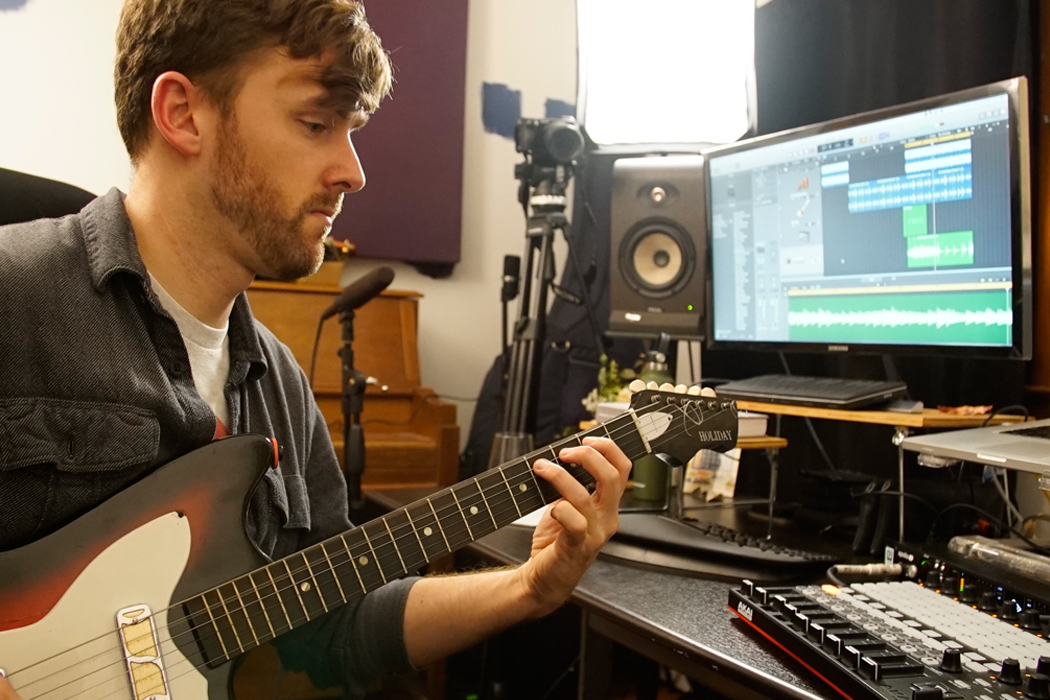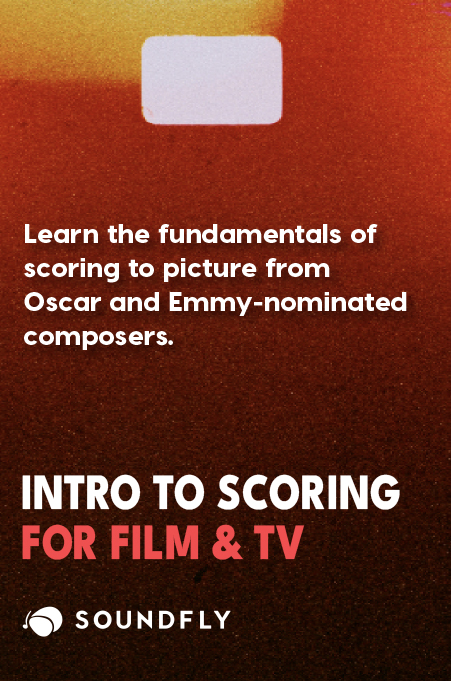+ Turn your unfinished ideas and half-developed loops into full, compelling songs with Soundfly’s online course Songwriting for Producers. Preview a lesson for free and subscribe for unlimited access for only $39!
Your chorus — or as some seasoned songwriters like to refer to it, your hook — is possibly the most important part of your song from the listener’s perspective. It’s the central component for driving listener engagement (i.e., people singing along, and how they’ll best remember your track). Therefore, your hook has to be catchy, memorable, and encapsulate the essence of the song, all at once.
The word “chorus” originates from Greek, meaning “to sing along.” The reason for this is simple: it’s the catchiest part of the song, and it’s where we all sing along together. In modern popular music, we also use the term the hook to convey its role for “hooking the listener in” to a song. As both chorus and hook terms imply, the idea is to grab the listener’s attention with a great-sounding chorus.
The keys to crafting a hit chorus are simplicity, repetition, contrast, and prosody.
1. Create Contrast
One way to create contrast between your verse and chorus is to make sure the pitch level of the vocal melody peaks during the chorus. In many hit songs, verse and pre-chorus melodies tend to be lower in pitch, where chorus vocals will rise higher in pitch. We pay more attention when the notes get higher; it translates as higher energy and gets our blood flowing, so this contrast helps to build anticipation for a great chorus to come.
Another way to build contrast is through the arrangement of the song. Your chorus is typically when the instrumentation should get thicker and denser compared to the rest of the song. Here is where you’ll bring in full drums (kick, snare, hi-hat, cymbals, and perhaps even some claps and snaps over the top). Guitar, piano, or rhythmic instruments could be playing thicker, more sustained chords, as opposed to arpeggios or fragmented structures that might frequently appear in the verse, pre-chorus, and bridge.
Through variations of arrangement and pitch, contrast can be established between the chorus and rest of the song, which will make it stand out.
2. Build Up the Energy
The verse is like driving on your street after leaving your house. In the pre-chorus, you’re driving on a boulevard, so you accelerate a little bit more. Finally, you get to the highway, where you fully accelerate. In hit songs, energy typically peaks in choruses, then drops in verse two, and then picks up again.
This does not mean that the chorus always needs to be in the middle of the song; there are plenty of great songs that start with a chorus. Sometimes, you start the energy at the top to establish your sound and navigate your way from there. The song also gets louder in the chorus section because everyone plays with more intensity, and dynamics increase. For this reason, energy and loudness usually go hand in hand when writing a killer hook.
+ Learn production, composition, songwriting, theory, arranging, mixing, and more — whenever you want and wherever you are. Subscribe for unlimited access!
3. Craft Out the Prosody
Great songwriting is a craft of creating motion in both music and lyrics, and making sure that they work together. In a nutshell, prosody is the marriage of words and music. As producers, we know how to create motion by writing faster, upbeat songs. We can also create motion in lyrics to make the hook catchier.
A great way of creating motion in your song is to structure your lyrics with alternating long and short lines. For example, the first line of your chorus would have 11 syllables. The second line would be four syllables. The third would be 11 syllables, and the fourth would be four again. This movement of long-short phrases creates a push-and-pull momentum, and accelerates the song forward.
Rhyme schemes are also a great way to mimic motifs in the melody. For instance, an ABAB rhyme scheme goes really well with a short-long phrasing structure. It reinforces that the long line has A rhyme and the short has B, which subconsciously also accelerates the song forward for the listener.
Final Words
These ideas were pulled from recent popular songs which employed these techniques, but in songwriting there’s always room for more innovation. Experiment with your songwriting process! In the end, it’s all about having fun and making great music, so make sure you enjoy what you create.
Want to get all of Soundfly’s premium online courses for a low monthly cost?
Subscribe to get unlimited access to all of our course content, an invitation to join our members-only Slack community forum, exclusive perks from partner brands, and massive discounts on personalized mentor sessions for guided learning. Learn what you want, whenever you want, with total freedom.






